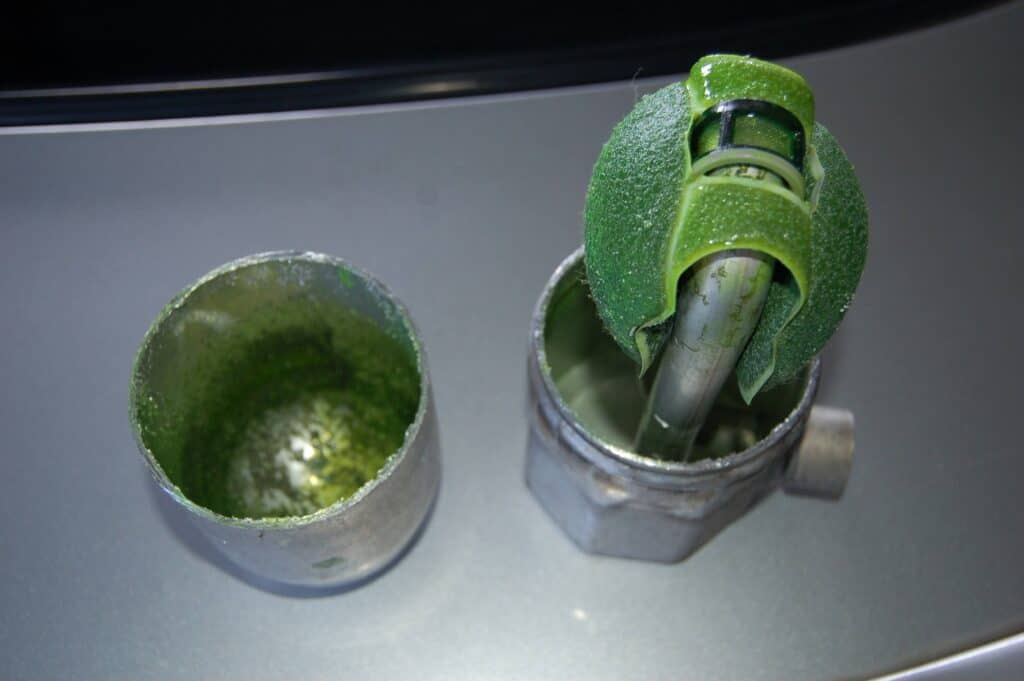Doing the repair right
By Richard Hawkins, MACS Contributor
The focus in the two previous weeks articles on the Chevy Tahoe was on what went wrong and what should have been done to correct the problem that was created and ultimately what was done (which was not the best option). Now let us reflect on what should have been done to start with (as that would have prevented any of this from occurring). I know you experienced technicians out there who are reading this already know, so this is for benefit of the less experienced techs.

Just to recap a bit, the original compressor was replaced because of damage sustained to the clutch in an accident. The system had been working fine before the accident. The only part which was replaced was the compressor (no orifice tube replacement, no accumulator replacement) and 8 ounces of oil were added to the system.
After recovering the refrigerant and removing the compressor, the lines should have been capped off and the compressor should have been carefully and completely drained and the amount of oil that was drained out, measured and recorded. Then the orifice tube should have been removed and examined and replaced. Note: The oil in the system looked clean so there was no need to do any flushing.
Then the replacement compressor should have been carefully and completely drained. Then a quantity of fresh oil equal to the amount of oil drained from the original compressor should have been added through the suction port. This is called oil balancing (replacing the same amount that is removed from the system). Then the compressor should have been hand rotated about a dozen times and then installed.
Next the accumulator should have been replaced. This should have been done last as it contains desiccant which absorbs moisture, and it is imperative that the desiccant be exposed to atmospheric air for as little amount of time as possible. The accumulator contains oil so the amount of oil that is being removed from the system in it must be replaced. The oil balancing method that was used with the compressor cannot be utilized because the desiccant bag inside acts like a sponge and all the oil can’t be drained as a result. So, it’s necessary to use the component replacement amount, which GM says is 60 ml for this application, which converts to 2.02 ounces. After adding the oil to the new accumulator, it should have been installed as soon as possible and then a vacuum pulled on then system and then the service work completed.
Next week, we will take a look at some “what if’s” that could have been encountered with this job and some options to address them.